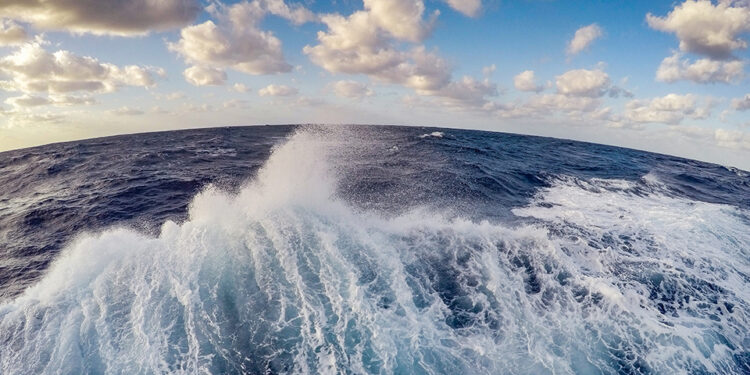Oceans play an integral role in climate change mitigation, absorbing some 23% of human-caused carbon dioxide emissions and more than 90% of the excess heat created by human-caused greenhouse gases. Despite the potential of oceans to mitigate climate change, only 8 of 192 countries with nationally determined contributions (NDCs) under the Paris Agreement have included quantifiable measurements for marine carbon sequestration ; and the NDCs of only two countries (Bahamas and Fiji) refer to ocean-based renewable energy.
“Oceans play an integral role in climate change mitigation, absorbing some 23% of human-caused carbon dioxide emissions and more than 90% of the excess heat created by human-caused greenhouse gases.”
Planning to preserve ocean health
Many more NDCs could and should include ocean-specific targets, especially because a stronger focus on the nexus between climate change and oceans is essential to harness the potential of the Blue Economy. The High Level Panel (HLP) for a Sustainable Ocean Economy calls for an approach that includes marine spatial planning, a process that brings together multiple users of the ocean – including energy, industry, government, conservation, and recreation – to make informed and coordinated decisions about how to use marine resources sustainably.
An integrated ocean planning approach helps countries design efficient and effective climate responses and achieve SDG 14, Life Below Water: to conserve and sustainably use the oceans, seas, and marine resources for sustainable development. This involves mapping and identifying the respective roles and interests of different users involved in the oceanic economic sectors, such as tourism, offshore wind power, and commercial fishing. By integrating climate dimensions and supporting adaptation and mitigation measures, integrated ocean planning can also play an important role in helping achieve SDG 13, Climate Action.
Climate-informed marine spatial planning considers current and future climate risks and opportunities to design, plan and implement integrated ocean plans that improve countries’ capacity to respond to climate events. Ultimately, the plans also reduce the vulnerability of ecosystems and coastal communities, enabling countries to address climate change efficiently and effectively.
For example, Mozambique’s recently approved marine spatial plan uses scientific assessments of its vulnerability to climate change to inform adaptation and mitigation measures, notably to address coastal erosion, choose the best location for protection works, and apply nature-based solutions.
“An integrated ocean planning approach helps countries design efficient and effective climate responses and achieve SDG 14, Life Below Water: to conserve and sustainably use the oceans, seas, and marine resources for sustainable development.”
Sustainability through better ocean use
Marine spatial planning can help countries shift to low-carbon solutions by unlocking marine sectors that contribute to climate change mitigation. Examples include offshore renewable energy, low carbon fuel bunkering, decarbonized maritime transport and port infrastructure, sequestration of carbon by coastal and marine ecosystems (also known as blue carbon), and limiting greenhouse gas emissions in oceanic sectors.
Nature-based solutions and hybrid infrastructure (combined natural and manufactured solutions) can be identified through marine spatial planning to increase climate resilience, by maintaining and restoring biodiversity and ecosystems essential to protect communities from the effects of climate change. For example, marine habitats such as seagrasses and mangroves account for 50% of carbon stored in marine sediments. Healthy coral reefs protect against climate hazards by reducing the intensity of waves by an average of 97%. Marine spatial planning can help mainstream solutions such as extending marine protected areas to include carbon-storing habitats and protecting or restoring native species that sequester carbon.
Climate change disrupts ocean patterns, and thus fish distribution and migration patterns, with a direct risk to food security of fish-dependent coastal communities. Marine spatial planning can help establish protected areas and support fish management measures to enhance adaptation to these impacts.
Integrated ocean planning can help countries reach their climate goals
The World Bank Group’s Climate Change Action Plan (2021-2025) sets ambitious targets: 35% of financing must have climate co-benefits, and 50% must support adaptation and resilience. Incorporating climate change in Bank-supported blue economy projects therefore helps developing countries mitigate (e.g., through offshore clean energy) and adapt (e.g., through nature-based solutions) to the impacts of climate change.
Finally, climate-informed marine planning is crucial to achieving the global climate commitments made at COP26 and will help meet national goals and commitments in biodiversity, conservation, and ecosystem restoration. This process can help countries translate their NDCs into investment plans, and, through internalizing future climate risks into planning and implementation, de-risk these investments.
As the momentum around ocean and climate action continues to grow, climate-informed marine spatial planning is more important than ever to develop transformative and actionable solutions. These solutions, in turn, will improve marine and coastal governance and help countries generate sustainable and resilient growth.
Courtesy World Bank












